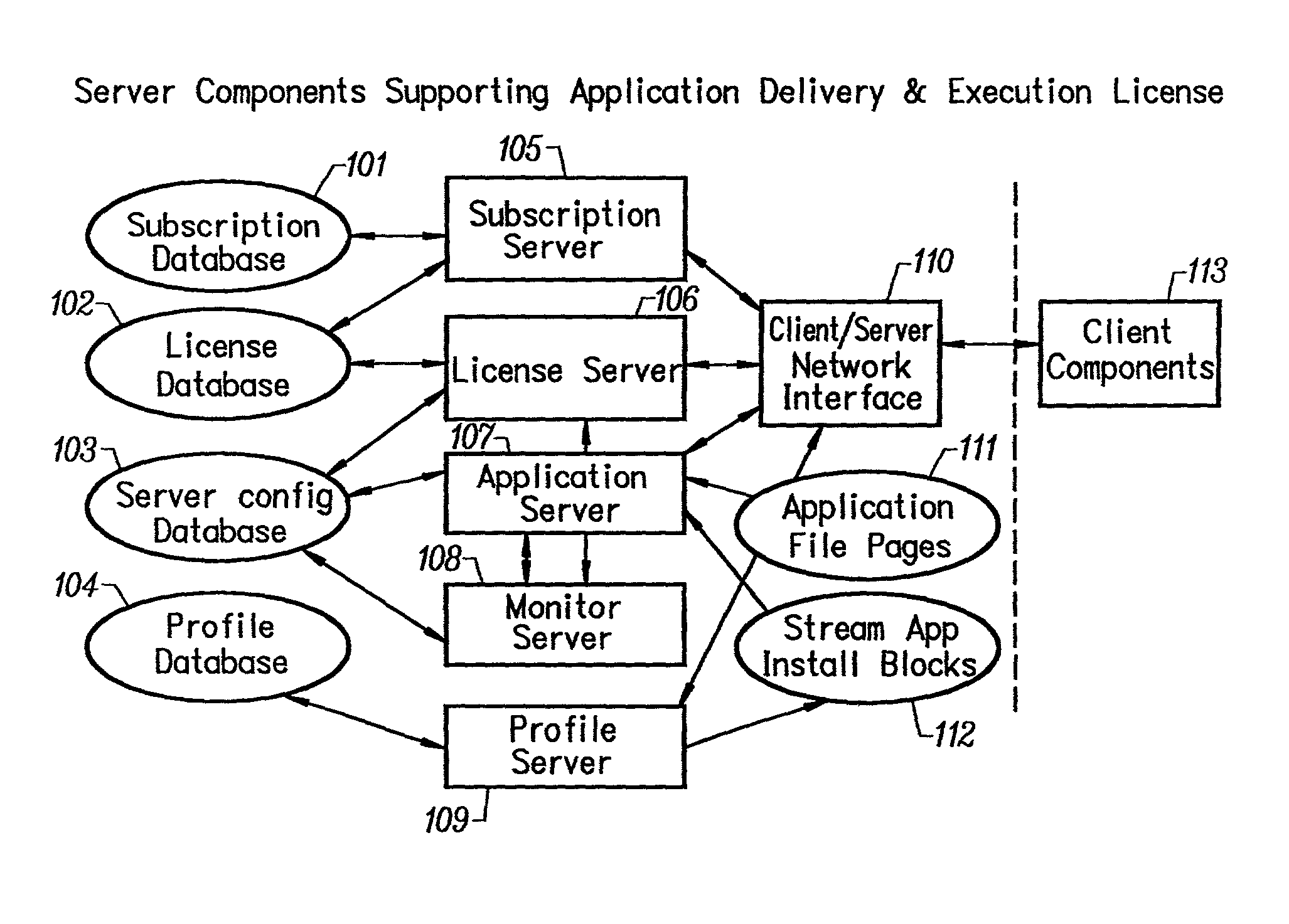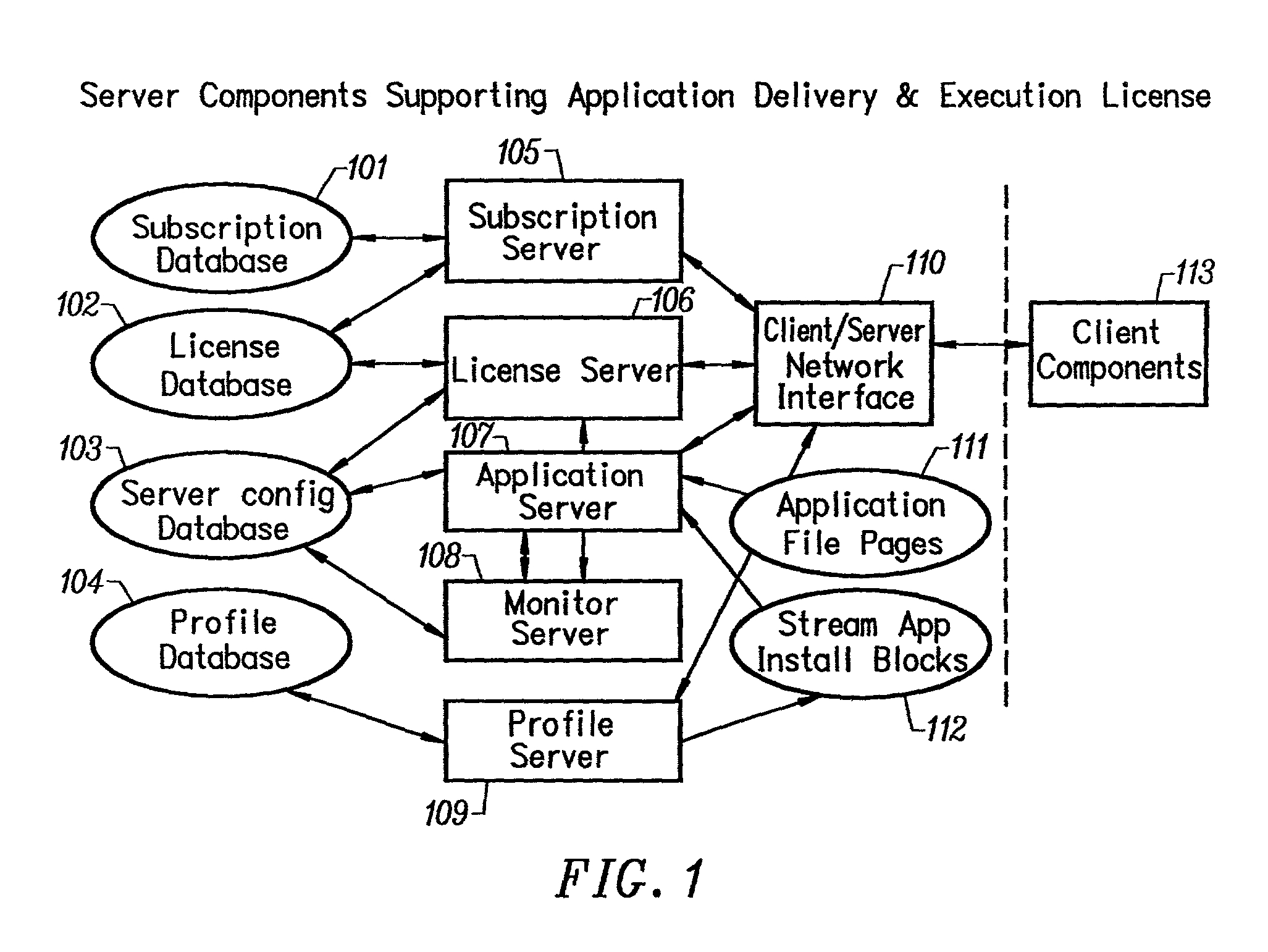Optimized server for streamed applications
a server and application technology, applied in the field of streamed application programs, can solve the problems of software companies losing billions of dollars a year in revenue, easy fooling of consumers' programs, piracy problems, etc., and achieve the effect of efficiently managing storage and retrieval and streaming application programs
- Summary
- Abstract
- Description
- Claims
- Application Information
AI Technical Summary
Benefits of technology
Problems solved by technology
Method used
Image
Examples
embodiment # 1
Anti-Piracy Embodiment #1: Client-Side Fine-Grained Filtering of File Accesses Directed at Remotely Served Files, for Anti-Piracy Purposes.
[0725]Referring again to FIG. 41, the approach of the first anti-piracy embodiment is that a software component 4102 executing locally on a client computer 4101 has available to it much more information about the state of this computer than does a server providing access to remote files. Thus, the server can filter access only on a much coarser level that can this client component. An ASP can take advantage of this by installing a network filesystem 4103 on the client computer that is designated to handle and forward all requests directed at files located on a given remote server. This filesystem 4103 examines each request, and either grants or denies it depending on whether the request is justifiable from a security perspective. It can use information such as the nature of the originating process, the history of previous access by the process, t...
embodiment # 2
Anti-Piracy Embodiment #2: Filtering of File Accesses Based on Where the Code for the Process that Originated the Request is Stored.
[0727]Referring again to FIG. 42, when a filesystem 4205 receives a request for access to a given file, the request always originates from a given process on the computer. By determining where the executable file that the process was run from is located, the network filesystem 4205 can make a more informed decision about the security risk associated with granting the request. For example, if the executable file 4204 is located on the local computer 4202, then it may contain any code whatsoever, code that may attempt to copy and store the contents of any remote files it can gain access to. The filesystem 4205 can reject requests from these processes as being too risky. However, if the executable file 4206 is being served by the ASP's remote server 4207, then the process can assume to be well-behaved, since it is under the control of the ASP. The filesyst...
embodiment # 3
Anti-Piracy Embodiment #3: Identification of Crucial Portions of Served Files and Filtering File Access Depending on the Portion Targeted.
[0730]Referring again to FIG. 43, a served application usually consists of many files. In order to steal the application, a pirate would have to copy at least those files that store the code for the application's primary executable, and perhaps other files as well. This leads to the conclusion that some files are more important that others, and that some portions of some files are most important of all. Ordinarily, the best solution would be to deny access to the primary executable file and its associated executables in its entirety, but this is not usually possible. In order to initially run the application, the filesystem 4304 must grant unrestricted access to some portions of the primary executable. In order to prevent piracy, the filesystem 4304 can grant access selectively to just those portions that are needed. Additionally, the running appl...
PUM
 Login to View More
Login to View More Abstract
Description
Claims
Application Information
 Login to View More
Login to View More - R&D
- Intellectual Property
- Life Sciences
- Materials
- Tech Scout
- Unparalleled Data Quality
- Higher Quality Content
- 60% Fewer Hallucinations
Browse by: Latest US Patents, China's latest patents, Technical Efficacy Thesaurus, Application Domain, Technology Topic, Popular Technical Reports.
© 2025 PatSnap. All rights reserved.Legal|Privacy policy|Modern Slavery Act Transparency Statement|Sitemap|About US| Contact US: help@patsnap.com



